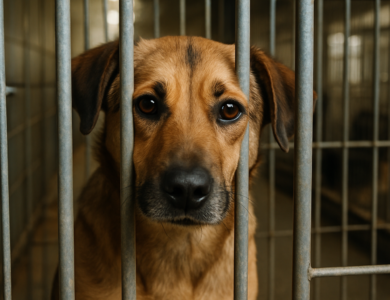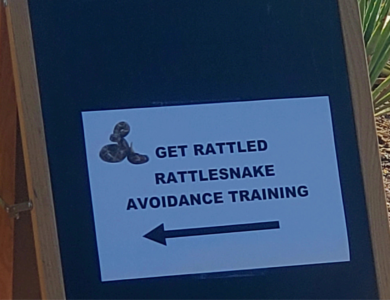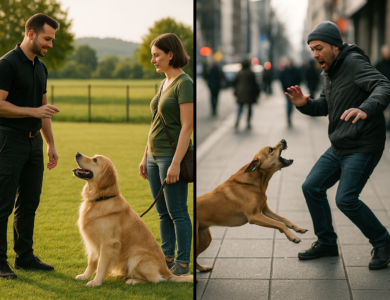We may earn a commission when you click on links across our website. This does not influence our opinions — learn more.
Do Dogs Still Need Yearly Booster Shots? Science Says Maybe Not

If you’ve been a dog owner for any length of time, chances are you’ve heard a lot of conflicting advice about vaccines. For decades, the standard message was simple: bring your dog in every year for a round of booster shots. But over time, research in veterinary immunology began to reveal that this old routine wasn’t always necessary — or even ideal. Today, most veterinarians recognize that not all vaccines need to be given annually, and that a more thoughtful, individualized approach is often better for dogs. So how long do vaccines actually last? And what’s the safest, most effective schedule to keep your dog protected without overdoing it?
What the Data Shows About Vaccine Duration
Let’s start with the basics. Core vaccines — the ones that protect dogs against the most dangerous and widespread diseases — have been shown to produce long-lasting immunity. Vaccines for distemper, parvovirus, and adenovirus in particular can trigger what’s called “immunological memory,” which means your dog’s immune system remembers how to fight these viruses for years after vaccination. After your puppy gets their initial vaccine series and a one-year booster, the current recommendation is a three-year interval between core shots. Some studies have even found that protective antibodies can last seven years or longer, possibly covering the entire life of a dog. That’s a big departure from the idea that every vaccine must be repeated yearly to stay effective.
But not all vaccines are created equal. Non-core vaccines — like those for leptospirosis, Lyme disease, Bordetella (kennel cough), and canine influenza — don’t produce the same durable immunity. Their protection typically lasts about 12 months, which is why many veterinarians recommend annual boosters if your dog is at risk. For example, if you live in an area where leptospirosis is common, or your dog frequents dog parks, groomers, or boarding facilities, you’ll probably be advised to keep these “lifestyle” vaccines up to date each year. This approach — vaccinate only as often as truly needed — is now the gold standard in modern veterinary medicine.
Governing Mandates and Where the Law Comes In
It’s important to understand that vaccine guidelines and legal mandates are not the same thing. In the U.S., rabies vaccination is the one vaccine universally required by law. Each state sets its own schedule, but the typical pattern looks like this: a rabies vaccine at three or four months of age, a booster one year later, and then boosters either every three years or annually, depending on your state and the vaccine label. Most states have adopted the three-year interval after the first booster, but some local ordinances still require an annual dose.
This is where things can get confusing for owners. Even if your dog’s immunity technically lasts longer than the labeled duration, legally the vaccine is considered expired the moment the certificate runs out. If a dog with an out-of-date rabies vaccine bites someone or is exposed to a rabid animal, the consequences can be severe — ranging from mandatory quarantine to euthanasia. For this reason, rabies is one area where the law simply supersedes immunology. No matter how strong your dog’s antibodies are, you are obligated to follow your state’s rabies schedule.
For other vaccines, like distemper and parvovirus, there are no state laws requiring you to vaccinate on a specific timeline. These decisions are left to you and your veterinarian. Veterinary groups such as the American Animal Hospital Association (AAHA) provide evidence-based recommendations, but ultimately it’s about tailoring a plan to your individual dog — one that considers age, health status, travel habits, and exposure risks.
The Leptospirosis Vaccine Causes a Lot of Debate
Among all the non-core vaccines, leptospirosis tends to generate the most debate. Lepto is a bacterial infection spread by wildlife and contaminated water, and it can be life-threatening for dogs. Symptoms range from lethargy and vomiting to kidney and liver failure, and it’s also zoonotic, meaning humans can catch it from infected dogs. Even with treatment, lepto can be fatal in 10–30% of cases, which is why many veterinarians strongly recommend vaccination — especially in regions where wildlife exposure is common.
Historically, the lepto vaccine had a reputation for causing more frequent side effects than other shots. Some dogs experienced fever, vomiting, or swelling at the injection site, and small-breed dogs were thought to be especially prone to reactions. But today’s lepto vaccines have improved significantly. They protect against four major strains of the bacteria, and large studies have found that serious adverse reactions are rare. In fact, the overall rate of vaccine-associated reactions in dogs is less than half a percent, and most of those are mild and short-lived.
Still, if you have a small dog or a dog with a history of vaccine sensitivity, it’s worth discussing strategies to reduce the risk. Many veterinarians will space the lepto vaccine out from other injections or monitor your dog in the clinic after the shot. While no vaccine is risk-free, the consensus among experts is clear: the benefits of protecting your dog from a potentially deadly disease usually far outweigh the small chance of a reaction.
Concerns Surrounding Over-Vaccination
The push to move away from blanket annual vaccines largely came from concerns about over-vaccination. While vaccines are generally very safe, they are still medical interventions — and each dose carries some risk of side effects. The more often you vaccinate, the more chances there are, albeit small, for an adverse event like an allergic reaction or immune-mediated disease.
Another issue that often comes up is dosing. Dog vaccines are not weight-based, which means a Chihuahua gets the same amount as a Great Dane. This makes sense immunologically — because a threshold amount of antigen is required to stimulate the immune system, regardless of body size — but it has made some owners uneasy. Research does show that smaller dogs are more likely to have reactions, especially when they get several vaccines at once. To reduce this risk, many vets now recommend giving core vaccines separately and spacing out non-core shots in small dogs, rather than trying to reduce the dose.
Some owners also choose to use titer testing, which measures antibody levels in the blood, to determine whether a booster is truly needed. This can be an excellent option for core vaccines like distemper and parvovirus, though it’s not reliable for diseases like leptospirosis or kennel cough.
Do Holistic Alternatives Really Work?
With all this debate, some dog owners naturally wonder whether holistic alternatives can replace vaccines altogether. One of the most talked-about alternatives is the use of homeopathic nosodes — products made from extremely diluted disease material. Advocates claim that nosodes can “educate” a dog’s immune system without the risks of conventional vaccines. But scientific evidence simply doesn’t support these claims.
In fact, controlled studies have shown nosodes do not provide reliable immunity. For example, a published trial found that puppies given parvo nosodes and then exposed to the live virus died at the same rate as completely unvaccinated dogs. By contrast, vaccinated puppies survived. Even holistic veterinarians who use integrative approaches, such as Dr. Jean Dodds, stress that nosodes are no substitute for core vaccines. While good nutrition, stress reduction, and a clean environment absolutely help keep your dog healthy overall, they do not protect against specific pathogens like distemper or parvovirus.
The bottom line is that no holistic product has ever been proven to prevent these diseases in the way vaccines do. Skipping vaccination altogether puts your dog at real, potentially fatal risk.
Finding the Right Balance for Your Dog
At the end of the day, vaccinating your dog is about striking a balance — protecting them from dangerous diseases without exposing them to more shots than necessary. Modern guidelines reflect this balance: core vaccines are typically given every three years after the initial puppy series and booster, while non-core vaccines are based on your dog’s lifestyle and environment. Rabies vaccination, of course, must follow the law in your state.
It’s always a good idea to have an open conversation with your veterinarian about which vaccines your dog truly needs. You can ask about titer testing, spacing out injections for smaller dogs, and tailoring the schedule to your pet’s unique risk factors. While holistic health practices are wonderful for overall wellness, there is no credible evidence that they can replace the proven protection that vaccines provide.



